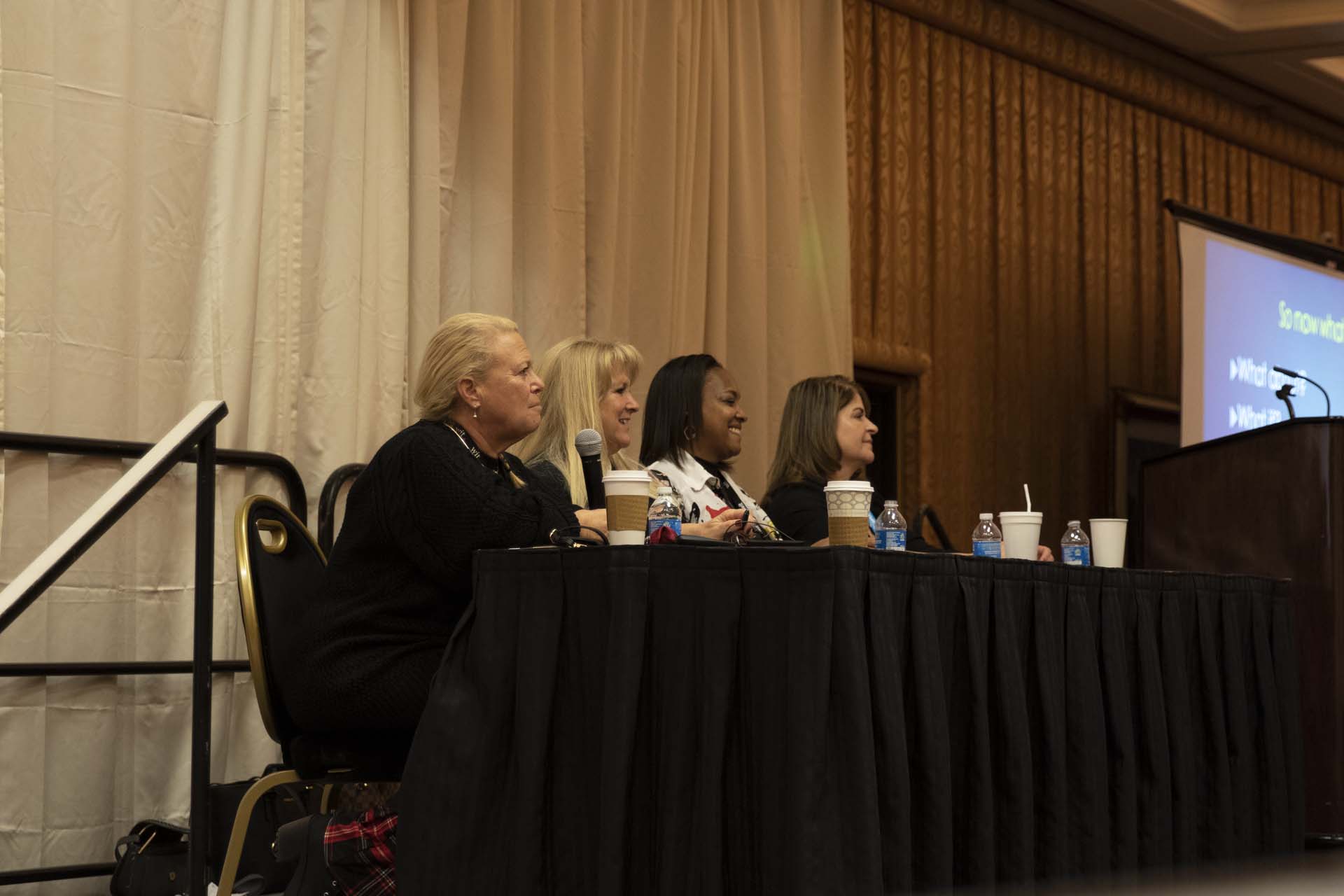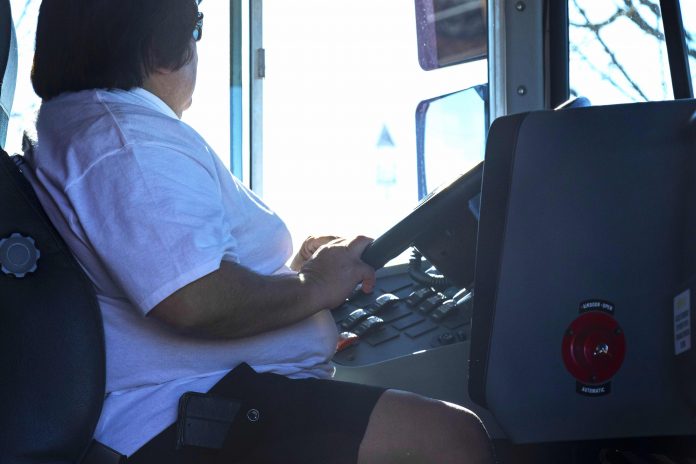With the deadline to comply with the new federal entry-level driver training (ELDT) requirements fast approaching, several industry discussions have centered around implementing the changes.
A survey sent to School Transportation News readers indicated that 64 percent of 39 respondents who had responded at this report have yet to implement the new requirements, which are contained in the Moving Ahead for Progress in the 21st Century (MAP-21) transportation reauthorization of 2012. Despite having nine years to prepare, STN’s web poll indicates that over 50 percent of readers don’t feel prepared for the new requirements that go into effect on Feb. 7.
Sessions at the Transporting Students with Disabilities and Special Needs (TSD) Conference as well as STN EXPO Reno last week and the virtual National Association of State Directors of Pupil Transportation Services (NASDPTS) Conference attempted to help alleviate some concerns and questions directors and trainers are facing.
On Dec. 2, Larry Minor, associate administrator for policy at the Federal Motor Carrier Safety Administration, discussed the new requirements with NASDPTS attendees. He noted that the federal ELDT requirements simply address the minimum requirements and that states may have requirements that exceed the federal law, meaning state requirements should also be met.
Minor explained that the ELDT dictates that trainees must complete the training from a registered training provider who has the same CDL endorsement or greater than the person being trained. If the trainer has a Class B CDL, for example, they cannot train someone for a Class A license.
He added that a specific number of training hours are not required, though different states might have their own requirements. ELDT instead covers all the curriculum that needs to be included when training. Minor noted that instructors must cover all the topics, and students are not allowed to test out of certain areas.
The theory and behind-the-wheel (BTW) or range training may be taught by two different trainers, but the BTW and public road training must be provided by the same person, he added. Each trainer must be registered on the new Training Provider Registry through the FMCSA and they must self-certify they meet the requirements. Following their training with a student, they must submit the information to the registry.
After a driver completes the required training, the training provider must document and submit to the Training Provider Registry (TPR) by midnight of the second business day after the training is completed.
Related: Are You Ready?
The TPR is currently open, and trainers should complete the initial registration process. Once approved, they will be able to add the specific locations they will be training at. All locations used for training must be added, Minor said.
Prior to the trainee taking the skills tests, states will be able to access the TRP and query who has met all the requirements.
“Make a plan and get ready,” Minor said during the NASDPTS virtual conference. “It’s been years and years in the making, and we are finally prepared to launch the entry-level driving training program.”
List of all topics that must be covered in ELDT:
Basic Operation
Safe Operating Procedures
Advanced Operating Practices
Vehicle Systems (Malfunction Reporting)
Non-Driving Activities
Behind the Wheel Range
Behind the Wheel Public Road
“P” Passenger Endorsement
Theory Instruction
Behind the Wheel Range
Behind the Wheel Public Road
“S” School Bus Endorsement
Theory Instruction
Basic Operation
Behind the Wheel Range
Behind the Wheel Public Road
Three days later, a similar discussion took place in person at STN EXPO Reno in Nevada. The session, moderated by industry consultant Alexandra Robinson, featured panelists Debra Kinemond, assistant director of transportation at Cheery Creek Schools in Colorado, Liz Sanchez, who recently started a new role as the executive vice president of Zum, and Rosalyn Vann-Jackson, the chief support services officer of Broken Arrow Public Schools in Oklahoma.
Robinson reiterated Minor’s information that driver training must meet the state regulations if they are set at a high standard than FMCSA’s. She added that the ELDT requirements are simply a minimum requirement. She noted that once again the training requirements are not talking about hours trained, but instead are topic driven.
She added that another big difference is the registration and documentation of all the information. Vann-Jackson noted that the first step is to register the district’s training provider at the site that the training will be conducted. She noted that training providers can register in multiple locations. In fact, they must register in every location where they are providing training.
When registering, however, trainees have the option to indicate if they are a public or private trainer. A private trainer is only conducting the training for that specific district or company. However, a public trainer can be accessed by anyone seeking training, and the individual can be publicly searched for and contacted by industry peers.
Robinson added that registering as a public trainer can earn revenue for the district or company. For instance, Vann-Jackson said her school district doesn’t have a third-party examiner on-site and instead contracts out with a neighboring district. She noted it’s cheaper for her district, as it is paying for the one-time training instead of paying a third-party administrator a salary.
Robinson noted that with one of the worst driver shortages experienced by the industry, this new rule could impact mechanics and other CDL holders in the office being able to drive on such short notice, as they would also need to complete all of the new training.
Vann-Jackson added that while oftentimes the industry has to rely on mechanics or technicians to drive, it’s not an optimal practice for transportation departments. She explained that if mechanics are on the road, preventive maintenance isn’t completed, which could result in a bus breakdown and students stranded on the side of the road.
Related: (STN Podcast E70) The Clock is Ticking: Feds Spotlight School Bus Safety, Funding & Driver Training
Related: High Anxiety on New Training Standards for School Bus Driver Applicants
Related: NASDPTS Discusses Entry Level Driver Training Final Rule, EPA Rebate Program
Related: FMCSA Says CDL Final Rule to Cut Cost of Entry-Level Training
Related: FMCSA Delays Minimum Training Requirements Final Rule for 2 Years
“When was the last time your mechanics were trained to drive a school bus?” she asked the audience. More importantly, she added, when was the last time they had student management training?
Sanchez noted that with the driver shortage, people tend to cut corners, which the industry can’t afford to do as it’s responsible for transporting the most precious cargo. She added that if a district already has a good training program, these new rules won’t affect it much.
Van-Jackson added that the theory training can be provided by anyone and online, as long as they register on the TPR. However, the BTW or range training must be provided in-person and the trainer has to have either been a driver for two years or a certified driver trainer for two years, depending on the state.
Kinemond advised looking at a district’s overall operations. She said Cheery Creek has started looking at all job responsibilities that require a CDL, like food services and the warehouse. The district changed the training process so that those positions will be onboarded through the transportation department, meaning they will undergo the same training process as school bus drivers and could take on a route, if needed.















